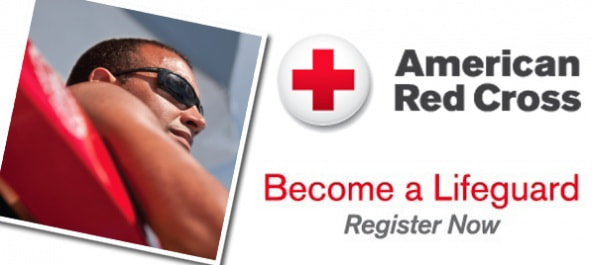Spindlebeak's Safety School offers classes for certification in CPR, First Aid and Lifeguarding.
We aim to provide Chesapeake, and the surrounding areas, with higher safety professionals. Backed by the American Red Cross, our aquatics leaders are fully trained and waiting to help you learn the skills necessary to save a life.
These courses can be taught at any facility that has a 25 meter/yard pool.
The American Red Cross Lifeguarding program has three core courses:
- Lifeguarding
- Shallow Water Lifeguarding
- Aquatic Attraction Lifeguarding
In the Lifeguarding course, you will learn the following:
- Water Rescue Skills
- Surveillance and Recognition
- First Aid
- Breathing and Cardiac Emergencies
- CPR
- AED and more
Prerequisite in order to complete the course:
- All participants must turn 15 years old on or before the last scheduled day of class.
- Successfully complete the prerequisite swimming skills evaluation.
- Prerequisite swim tests will be held at the beginning of the first day of the course. Students who are unable to pass these tests will not be able to continue in the course.
- Prerequisite 1: Swim-Tread-Swim Sequence: The total distance participants in the Lifeguarding course are required to swim during the Swim-Tread-Swim Sequence has been shortened to 200 yards (150/2 minute tread/50 yards). Previously participants were required to swim 300 yards during the distance swim portion of the prerequisite swimming skills evaluation. Swimmers must jump in from the side, fully submerge, recover to the surface, and swim the first part of the swim. Swimmers must swim the distance without stopping, while keeping there face in the water, and demonstrating good breath control. Students are permitted to swim using front crawl, breaststroke, or a mixture of both. Candidates may not swim on their back or side for this event and use of swim goggles is allowed.
- Using only their legs, student must be able to tread water for 2 minutes. Candidates will be asked to place their hands under their armpits for this exercise. Participant must maintain their position at the surface of the water. Participant must keep their head above the surface of the water and able to breath. Once the 2 minutes of treading is completed, the participant will then swim their second part of the swim, in order to complete prerequisite 1.
- Prerequisite 2: A timed event performed within 1 minute, 40 seconds
- Starting in the water, swim 20 yards with your face in or out of the water, submerge and retrieve a 10 pound object, in 7 feet to 12 feet of water. Return with the object to the wall and exit the pool.
- Goggles are not permitted during prerequisite 2.
- While swimming with the object, the participant must hold the object with both hands, and keep their face at or near the surface of the water.
- You should not swim the distant under water. Candidates must exit the water without using a ladder or steps.
- If you wear contacts, we recommend removing them prior to participating in any water activity.
- Starting in the water, swim 20 yards with your face in or out of the water, submerge and retrieve a 10 pound object, in 7 feet to 12 feet of water. Return with the object to the wall and exit the pool.
To successfully complete a course in the Lifeguarding program, the participant must:
- Complete all online course content in advance of the corresponding in-person skill sessions (blended learning courses only).
- Attend the entire course and participate in all class sessions.
- Actively participate in all course activities, including assuming various roles during skill practices, skill drills, activities and scenarios.
- Pass the final written exam with a minimum grade of 80 percent.
- Pass the final skill assessments.
Certification
Successful course completion results in certification that is valid for 2 years.
The core Lifeguarding courses (Lifeguarding, Shallow Water Lifeguarding, and Aquatic Attraction Lifeguarding) integrate professional-level CPR/AED and first aid content; therefore, CPR/AED for Professional Rescuers and First Aid are always included as part of the Lifeguarding certification.
The core Lifeguarding courses (Lifeguarding, Shallow Water Lifeguarding, and Aquatic Attraction Lifeguarding) integrate professional-level CPR/AED and first aid content; therefore, CPR/AED for Professional Rescuers and First Aid are always included as part of the Lifeguarding certification.

